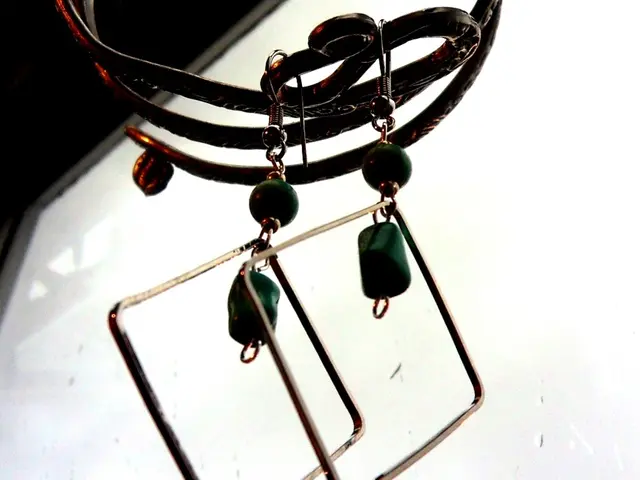Walking Aids: Recognizing Appropriate Uses for Walkers and Canes
Navigating life's challenges can be a breeze with the right tools, and that's where canes and walkers come in handy for older adults or folks with disabilities facing balance and mobility issues. The decision between a cane or a walker depends on the level of support needed, lifestyle, and the wallet.
As we grow older, age-related conditions might rear their heads, making mobility a bit harder. The Centers for Disease Control and Prevention (CDC) reports that every year, one in four older adults experiences a fall, and unfortunately, falls in later life can lead to serious injuries to muscles and bones.
Assistive devices can help maintain independence and prevent falls. With a plethora of mobility devices available, canes and walkers are ideal for those with some mobility issues. Wheelchairs are more suitable for people with no or limited mobility.
This article explores the differences between canes and walkers, when and how to use each, and the best option to choose.
Here's a quick comparison chart to help you understand the key features of each device:
| Mobility Aid | Pros | Cons | Conditions | Cost ||--------------|----------------------|-------------------------------|--------------------------------|--------------|| Canes | -Balancing aid | -For minimal weight bearing | -Minor balance issues | $10-$40 || Modified Canes (3-4 legs) | -Greater balance aid | -Heavier & more cumbersome | -One-sided weakness or advanced issues | $15-$40 || Walkers | -Stable | -Needs lifting with each step | -More significant issues | $20-$60 || Rollators (2-4 wheeled walkers) | -Easier to maneuver| -Less stable | -Spinal cord or heart/lung issues| $35-$100 |
-helps with balance-adjustable
Choosing The Right Aid - Canes vs. Walkers
-for minimal weight bearing only-some have a curved handle that some may find difficult to grasp and cause pain, especially for people with joint or muscle conditions
Canes are great for individuals with minimal balance or stability issues, leg weakness, or pain from conditions like arthritis. A person typically holds a cane with one hand and can come in single-legged or multi-legged varieties. The more legs a cane has and the wider its base, the more stability it offers.
-mild balance issues-mild to moderate arthritis of the lower limbs
Walkers, on the other hand, are ideal for those with more significant balance and mobility issues. This is a three-to four-legged device that requires the use of both hands. For extra comfort, a person can add support for their wrists or arms and a range of accessories like wheels or brakes.
$10-$40
There are different types of canes and walkers to cater to varying needs.
Types of Canes and Walkers
-offers greater help with balance than a standard cane-can bear more weight-adjustable
Standard canes are basic,typically made of wood or aluminum, with a rubber tip, hook-shaped or flat handle. These are ideal for those needing minimal assistance.
-heavier-more cumbersome-may be harder to use on stairs
Multi-legged canes can stand independently, offering greater stability for users with one-sided pain or weakness, and some models even have a secondary grip for extra help getting up or sitting down.
-one-sided muscle weakness (hemiparesis) or more significant issues with balance
Walkers come in three varieties:
$15-$40
- Standard walkers have four rubber-tipped legs for more stability but require lifting each step.
- Two-wheeled walkers are easier to move but less stable and require cognitive effort.
- Four-wheeled walkers (also called rollators) allow a person to keep a more natural gait and feature extras such as brakes, a seat, and a basket. However, they require more coordination and can be heavier to maneuver.
Each type has its benefits and drawbacks based on individual needs and abilities.
-stable-foldable
The Great Debate - Cane vs. Walker
-no wheels-needs lifting with each step
Effective cane use requires an individual to have enough strength to walk and maintain their balance. While a cane can help with minor balance problems, it requires a person to be able to steady themselves if they slip. They must also be able to coordinate the cane with their arm while walking.
-for conditions that affect the function of muscles or nerves or for fractures
Walkers, on the other hand, are more appropriate where a person has a more significant balance impairment.Users can utilize their arms to support their body weight, reducing strain on their legs.
$20-$60
Determining when to switch from a walker to a cane depends on various factors such as improvements or worsening of balance, strength, and endurance, recommendations from doctors, and evaluating a person's daily routine to determine which device is more appropriate.
Where to Find Adequate Support - Canes and Walkers
-easier to move-may have a seat and basket for comfort
A person may purchase their preferred mobility aid directly from a supplier. They may also be able to acquire them through a health clinic, insurance company, or a non-profit organization for older adults or people with disabilities.
-less stable than standard-not foldable
Costs and Medicare Coverage
-issues affecting the spinal cord, conditions that slow down mobility like heart or lung diseases
According to the American Family Physician, canes generally cost between $10 and $40. Walkers can be pricier, ranging from $20 to $100. Medicare considers walkers and canes as Durable Medical Equipment (DME). A person can rent or buy a cane or walker through Medicare Part B if medically necessary and required for home use.
$35-$100
Staying Safe - Using Canes and Walkers

Regardless of the mobility aid chosen, safety should always be top priority. To use a cane or a walker safely:
- Maintain a wrist-level grip at relaxed arms
- Keep shoulders back, arms slightly bent
- When using a cane, hold the cane opposite the injured or painful side
- Use handrails when navigating stairs
- When using a walker, place it one step ahead, move injured or painful leg to middle, and bring the stronger leg to meet it, taking small, slow steps
- Sit and stand using proper techniques, and avoid using a walker to help stand up, as it may give way
- Do not use a walker on stairs or escalators
Maintaining independence and navigating life's challenges with ease and confidence has never been simpler thanks to canes and walkers.
- Assistive devices, such as canes and walkers, can help older adults and individuals with disabilities maintain independence and prevent falls.
- Canes are ideal for those with minimal balance issues, leg weakness, or pain from conditions like arthritis.
- Walkers, on the other hand, are best suited for individuals with more significant balance and mobility issues.
- Various types of canes and walkers are available to cater to different needs, such as standard canes, multi-legged canes, standard walkers, two-wheeled walkers, and four-wheeled walkers.
- Purchasing a mobility aid can be done directly from a supplier, health clinic, insurance company, or non-profit organizations for older adults or people with disabilities.
- Costs for canes and walkers can range from $10 to $100, and they are classified as Durable Medical Equipment (DME) by Medicare.
- The use of canes and walkers should prioritize safety measures like maintaining a wrist-level grip, using handrails on stairs, and not using a walker on stairs or escalators.
- Recently, some research has shown the potential benefits of CBD for managing pain and inflammation associated with chronic diseases and aging, which could potentially improve the overall health and wellness of seniors, but further research is necessary to determine the long-term effects and safety of CBD for this demographic.








